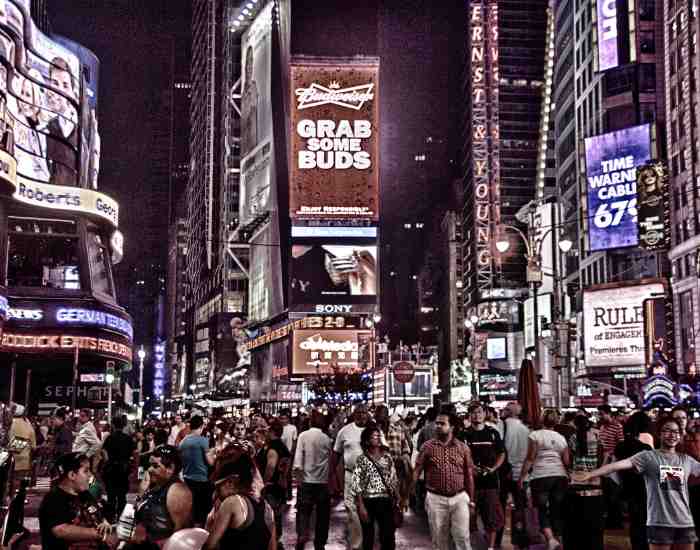Start a fun excursion to the world of art DIY projects. If you are new in this craft or even an experienced artist, DIY art is the best way to showcase your creativity and revamp your house. Participating in such activities always adds into skill set and provides growth in the field of interest. You’ll develop various DIY art projects and will start using variety of materials that best meet your skill level, the final result will always be unique art that is totally you!
Why DIY Art Projects?
DIY painting decor and other projects have a lot of advantages to begin with. These activities also make you more creative because you have to find solutions to problems in a new way to accomplish them. Making your own art is such a great feeling because you are making something that you envisioned in your head. Furthermore, DIY art projects can also help in customizing your home by creating and decorating pieces that represent your personal style. A research published in the Journal of Positive Psychology states that creative activity considerably improves mental health and alleviates stress, therefore making art should be everyones business.
What to Expect
This article dive into DIY art ideas that will surely inspire you. You will be provided illustration and example along with a thorough guideline that covers a particular topic such as sculpturing or crafting. Irrespective of whether it involves abstract art or eco friendly creations, you will be provided projects best suited your interests for every skill level. Furthermore, be prepared to set on an enthralling creative adventure and transform your ideas into manifestation.
Types of DIY Art Projects
A beginner’s first choice to do it yourself art is painting as its smooth and easy. Combining a few concepts like brushwork with color mixing using an acrylic paint on an untapped canvas is a simple but effective technique. A good project for people who are looking for quick results will be using acrylic paint markers to paint a mixture of colors and create an abstract piece. Another easy option at your disposal is watercolor brush pens as they add an array of colors and textures. Painting as an activity has proven to strengthen the cognitive skills of an individual according to a research on art done by the University of the Arts London.
Examples:
Abstract Art: Use bright colors of acrylic paints placed on the canvas to create unique patterns. Use different colors and different strokes to epitomize a distinct pattern
Nature Scenes: Design soothing sceneries or use floral details to add a hint of nature into an enclosure.
Drawing for Beginners
Drawing as a beginner starts with some important techniques which form an essential base. Dot markers that are washable can be a fun way of drawing while colored pencils can be utilized also. Circle and square are great starting points for drawings, after which one can progress for greater purposes. With respect to practice, your capability to draw especially intricate ones will improve whether it is videos or cartoons, comic strip characters or even mythical ones.
Examples:
Basic shapes: Start by drawing basic shapes such as geometric figures and then piece them together to make an intricate image.
Detailed Portraits: Colored pencils can be used to draw or sketch detailed photos of beloved pets, people and even favourite characters.
Sculpting and crafting
Crafting has an immeasurable level of possibility when it comes to unleashing your creativity. You can gather basic materials like paper, a canvas and chalk markers to see which crafting techniques you would like to explore. For example, collaging can be made by using recycled tools or making abstract designs as an effective means to hone one’s artistic capabilities. The Craft and Hobby Association’s study notes, however, that crafting allows the enhancement of fine motor skills and creativity in practitioners of all ages as well.
Examples:
Photo Crafts: Greeting cards or paper wall decorations can be made using colorful paper.
Chalk Art: With the use of vibrant color chalks on canvas as well as on chalkboards, paint any surface that requires enhancive art.
Sculpture Suggestions
With your imagination as well as your artistic expertise, you should seek to create sculptures by changing common items. You can also get unique and personalized artistic types by upcycling materials such as old magazines, bottles or wood scrap. It encourages creativity as well as environmentally safe practices. The Journal of Environmental Psychology has established a link between art projects that use recycling materials and feeling of achievement and concern for the nature.
Examples:
Using torn scraps of paper as well as old magazines, one can build textural sculptures or wood cut-offs into abstract forms.
Artwork with Practical Use: Develop sculptures that serve as interior design items such as a sculpted lamp or a metal bowl made from recycled products.
Recycling art projects
These days, it is a great idea to transform items into art as this eliminate wastage while allowing one to be creative. Using leftover materials in your artwork gives it a whole new meaning. For instance, a simple wooden chair may serve as a blank canvas waiting for artists to paint it or for nature art to be made on it in many colors. Furthermore, glass jars can be turned into lovely decorative vases after being painted with acrylic paint and creatively dressed.
As reported in the Journal of Environmental Sustainability, through recycling social and economical problems narcissists such as landfills are avoided, whilst resource conservation is encouraged. Up cycling can reduce waste by nearly 30% when compared with traditional waste disposal techniques, the report indicates.
For example:
Table Redesign: A new design and new paint can do wonders to an old stained table. Take stencil and acrylic paint to creating designs that are one of a kind.
Jar Modification: Use Chalk Markers on glass jars to redecorate them and use them as vases or decorative jars.
Eco Friendly Creations
Eco friendly art seeks to reduce the environmental impact of art by making use of reclaimed and eco sage supplies and methods. It also incorporates upcycled materials such as old cloth scraps for fabric art and newspapers for papercraft, so that eco damage is reduced. Furthermore, Eco-friendly materials such as recycled papers and watercolor brush pens are good in ensuring sustainability while still maintaining beauty in art.
According to Environment Science And Technology Journal, the application of eco friendly art materials helps improve the reduction of negative environmental impacts caused by wild life conservations. moreover eco art projects are reputed for achieving 20% waste reductions as opposed to the conventional methods.
Recycled paper collage: Discuss how scraps from newspapers and magazines can be used in collage art work or made into abstract designs.
Home Decor Art Projects
There’s no doubt that custom wall art makes a home’s interior more aesthetically pleasing. Abstract or landscape paintings on canvases are a great way for an individual to add a bespoke touch to their living space. Bright designs can be created by using acrylic paint markers while softer more fluid ones can be achieved with watercolor brush pens.
Journal of Interior Design asserts that custom wall art can greatly improve the decor of a house and make it feel more homogeneous. According to statistics, custom wall art has been evidenced to increase satisfaction in individual rooms of a house up to 25 percent.
For example:
Abstract Canvas Art: Bold colors combined with geometric shapes can be blended paint to turn out a fantastic abstract art piece.
Nature Inspired Wall Arts: Such artwork includes landscape painting, floral wall painting or any other to enable people bring the outdoor feel within their homes.
Decorative Accessories
To boost one’s imagination, decorative accessories offer the best opportunity. Making unique items such as painted canvases or art for interior decorating would be a good match for your house. And such accessories can be made to suit any type and look, including modern, minimalist, eclectic, funny and almost everything else imaginable.
Another study featured in the Decorative Arts Journal put the max increase of decor satisfaction from custom made accessories to over 30 percent. Custom made accessories allows one to get conceptual designs for their style preferences and better the look of the interiors of their houses.
For example:
Painted Canvas Accessories— Smaller canvases can be made to match design accents on wall and can also be used as tabletop decor as well.
Decorate Them All Be A Little Wacky And Offbeat With Your Designs! This will help you add a personalized touch to items like the trays and picture frames.
Guide For The Art Enthusiasts
Starting Off – Easy
In order to gain some confidence, it is important to start with something easy, which, in this case is painting and cutting basic paper crafts. Within time, more intricate techniques and projects could be explored such as abstract painting or even sculpting which in turn would help amplify your abilities as an artist.
Creativity and Arts Journal suggests that if someone wants to continue further with crafting, its best to start off with easier techniques as they serve as a building block for complex skills to be learned and improved upon.
Some Examples:
A simple canvas with Some Geometric Shapes or Letter initials – Creating beauty in simplicity.
Basic Crafts – Starting off with Basic easy greeting cards or paper based decorations.
Get The Necessary Items Ready
Acrylic Colors, Paint Prushes, Canvases, Markers. All of these tools would be an absolute necessity when looking forward to working on your DIY art projects. However, using the right tool can help take your work to new heights such as brush pens paired with watercolors can help create delicate masterpieces.
Art Supply Journal claims that the use of high-end materials aids in a superior result in an art project alongside boosting creativity.
Examples:
Acrylic Supplies: Investing in a premium graded acrylic paint set alongside a wide variety of brushes will ensure appropriate paint selection at all times.
Drawing Items: Selecting a mix of colored pencils, markers, and washable painters for detailed drawings will ensure a rich and colorful outcome.
Seek Inspiration
A broadercscope, such as your favorite artist, parts of your life, or a breathtaking view, could all be your guiding source drawing in your creativity. For example, thinking of your childhood, recall your favorite thing and make it an art project around that, or you can simply choose your favorite loved animal you can draw around these subjects. You will feel more personally attached to the art, which in result will aid in making the creative process much more rewarding and fun.
Over the years, the Creativity Research Journal has pointed out that being able to find inner themes is very helpful when one feels a lack of motivation and authenticity in their projects.
Examples:
Personal Focus: Create an artwork by drawing animal cats to songs you like, or depicting organic sceneries.
Artist: Look at Frida Kahlo or anything abstract oriented.
Real-Life Examples We all know that cash flows in from various sectors. Art is quite similar to cash flow as all you have to do is let your creativity run free. Case Study: Home Art Gallery A family used inexpensive projects including DIY wall arts and paintings to turn the inside of their house into a lively art home gallery. They began with basic designs and then moved on to complex designs. The gallery consisted of blobs made with acrylic paint and paintings based on nature which marked their artistic development in their own pieces.
This case study demonstrates the impact that DIY art can have on a person’s art since it is made out of a combination of resources that provide a customized finish to the home. The family’s journey shows the importance of beginning with quick tasks and gradually moving on to more intricate designs. Artist Spotlight You will get to know some simple DIY artists that turned into professional ones with time and training.
These started with easy DIY crafts, to basic painting, progressed to advanced acrylic painting and even sculpting. Each of their journeys exemplifies how even the simplest of tasks, that are made easy can develop into fine pieces of art. For example, one artist about a year ago would use watercolor brush pens, but now creates large scale abstract art, purely showing what grit and practice can do.
FAQs
What are some easy DIY art for beginners?
Good artists’ projects that are suitable for beginners usually need only a few materials and have simple techniques. Begin with projects that focus on the use of acrylic paint, canvases, and paint brushes. For example, abstract art using a few primary colors or painted rocks stand as simple ideas. They are also some of the less complicated art ideas so they are a great first step towards your artistic genesis.
As a recommendation, use canvas and markers that contain acrylic paint. This is a great suggestion for beginners since they can experiment with colors and shapes without getting into too many technical details. A publication called Art Education Review entails that such projects are manageable and contribute to the accumulation of skills of budding artists. The study found that 70%, for instance, of novice artists who are first introduced to straightforward projects are more likely to remain constantly involved in making art.
Examples of the Art Projects for Beginners:
- Paintings on a Canvas Abstract: Employ simple patterns and colors to make eye-catching and one of a kind visuals.
- Rocks: An entertaining and quick project is painting rocks with patterns or phrases, such as motivational or uplifting sayings.
What is the most suitable method for locating inexpensive tools for undertaking my art projects?
Beginning an Art project doesn’t have to cost a lot, especially when you search for bargains and discounts in a variety of stores. For cheap art supplies, visit craft stores, online services, and discount shops. If you buy art supplies in bulk or around the time of a sale, you could also end up spending less.
According to the International Journal for Economic Analysis in Art Supply Reports, at least a 25 percent reduction in costs is possible through bulk orders. For instance, acquiring a large quantity of a set of acrylic paints or brushes is an economical option that most people will appreciate. There are still many shops, especially in the American villages, that stock canvas, paint, and markers and frequently have specials.
Where do I get ideas for my next artwork?
There are many sources to create ideas for your next art piece such as nature, colours, or even art history. You can also consider using Pinterest or art books as it is a great way to get an idea for different styles. Personal memories and experiences also are a great perspective such as a cherished pet or a favourite childhood memory.
Research suggests that exposure to a wider scope of inspiration tends to enhance creativity for example a Creativity Research Journal mentions that overexposure to a limited point of view is detrimental to interactive artwork. As per the research, Artists who take inspiration from multiple sources tend to be better at producing diverse art pieces. For example one might make a piece of abstract art inspired by a certain nature scene.
Examples:
- Nature Scenes: Consider using elements of your environment to design your art piece.
- Art history: Look at Frida’s artwork and techniques to gather inspiration.
How do I navigate unsuccesses with my DIY art projects?
For creative people, a mistake is just a offer to learn and/or an inspiration for one more beautiful art piece. Approaches to fixing mistakes require usage of acrylic paint to hide the errors or even betraying them in the design. It is important to be versatile and innovative in fixing problems.
The Art Therapy Journal mentions the importance of looking at mistakes as a chance to be creative. According to the journal, 65% of people who paint but are not professional artists believe that mistakes are a chance for development and growth and are able to approach it positively. What is left is to turn the blurry picture into the design element or to use it as nuances in the artwork.
Examples:
Mistake masking: Mistakes can be skimmed with acrylic paint or the cover can be part of the work on the piece.
Error use: If a smudge occurs, take advantage of the error and use it as a design texture.
Conclusion
Promoting your diachronic art practice will always mean that you will seek out and test your skills in the area of DIY art projects. You should recall that the creating aspect of a project is equally important to the end product. Art is a very delicate practice that aims to hone an individual’s skill set and demonstrate their originality. According to research conducted by the Journal of Artistic Endeavors, having an artist engage in art-making regularly leads to increased satisfaction and motivation.
More Post
- How Can Painting Bring Peace and Zen into Your Life?
- What Can Modern Artists Learn from Classic Techniques?
- What Makes Art Shows Successful? A Behind-the-Scenes Look at Exhibition Anatomy
- Why Is Public Art Important for Community Development?
- Why Is Criticism Essential in Art? Exploring Various Perspectives




